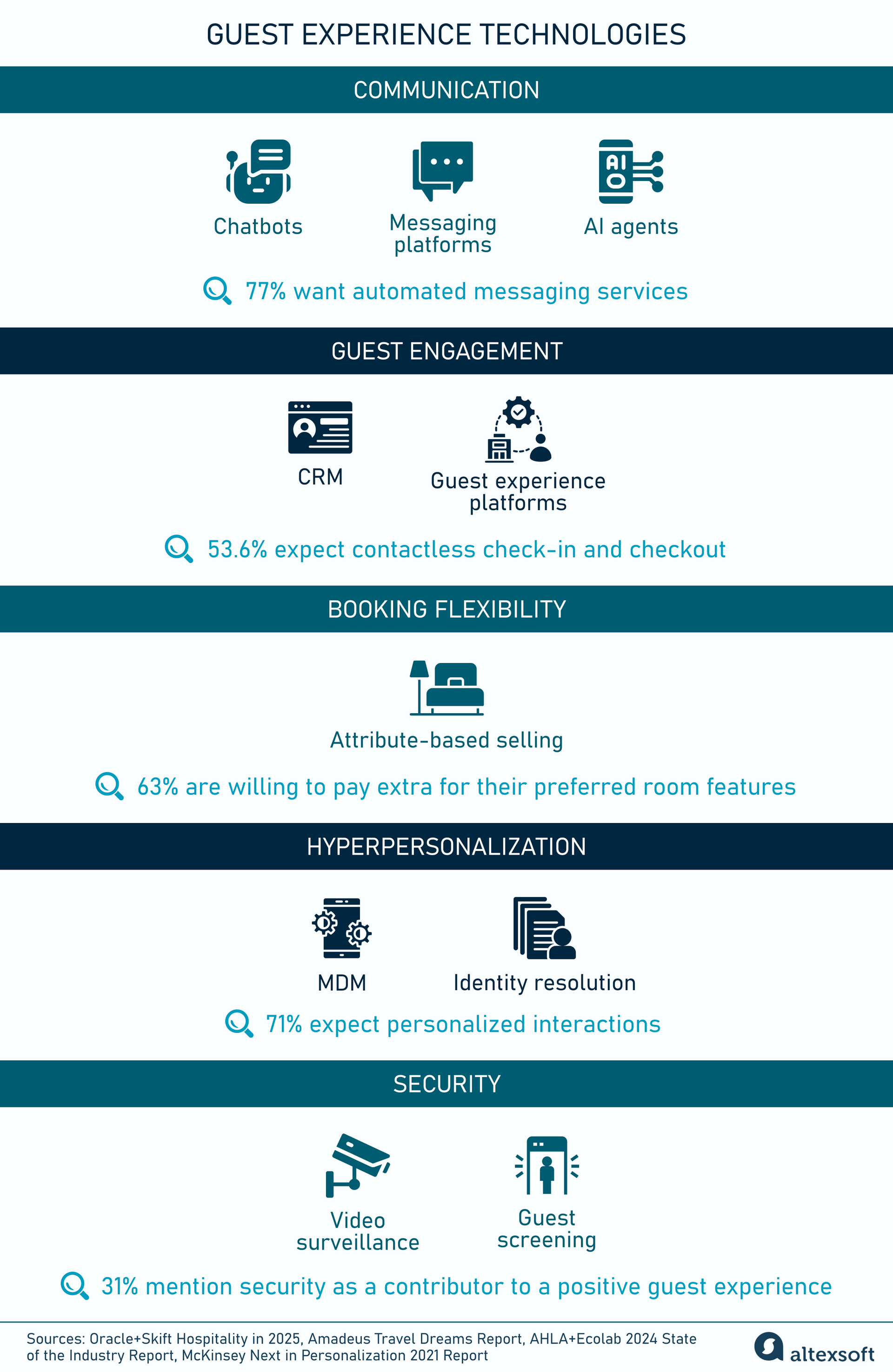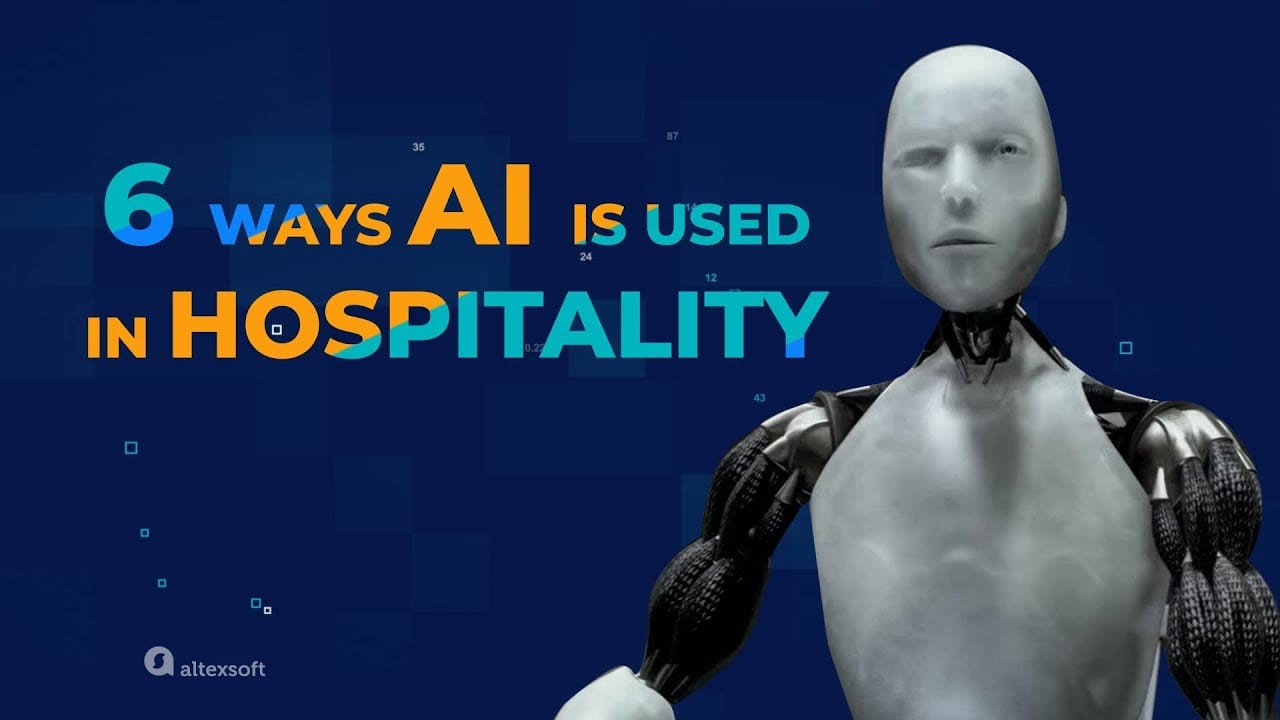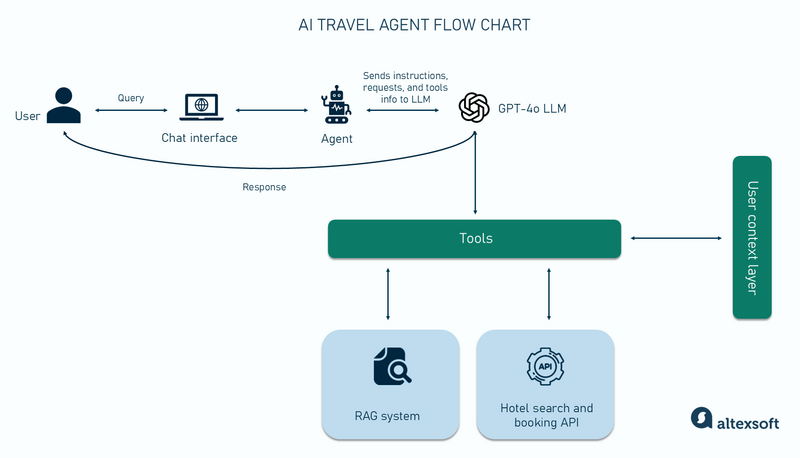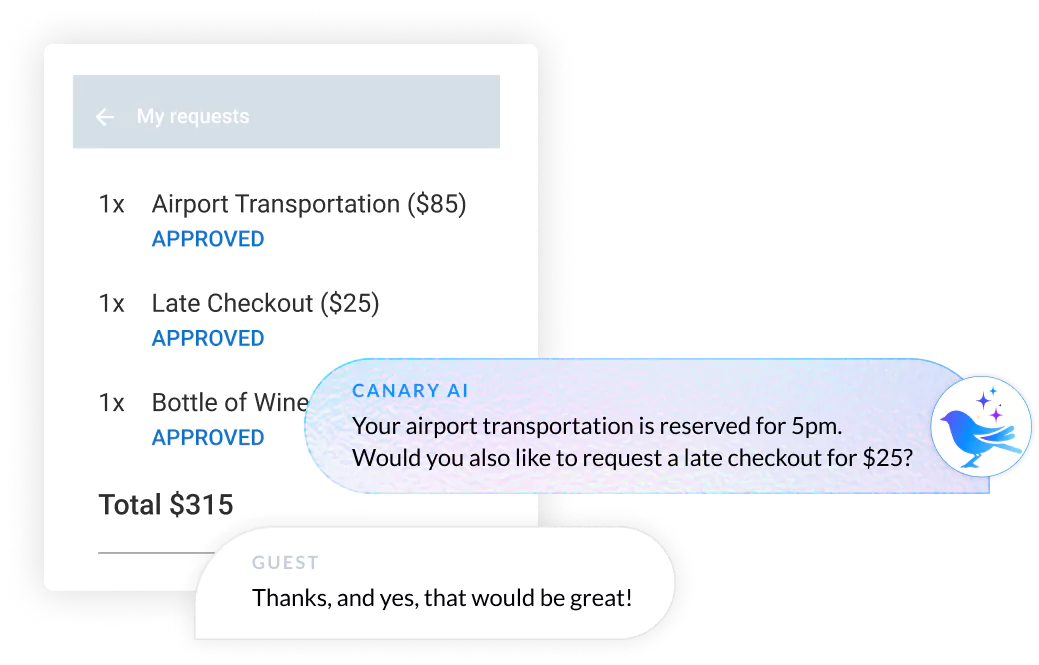Guest experience is everything in hospitality. So hotels and vacation rentals go out of their way to make every moment smoother and more enjoyable – and technology is the magic that makes it possible. Or is it? Let’s discuss whether innovations impact the hotel guest experience – and if so, in what ways.

Some tech solutions to enhance hotel guest experience
What is guest experience?
Hotel guest experience is basically the overall impression guests get from all the interactions with the property. It’s about how they feel at every touchpoint or step of their journey, how convenient or enjoyable things are, and how well the property meets or exceeds their expectations.
Guest experience isn’t the same as customer service, though sometimes the two terms are confused. Guest experience is the big picture — atmosphere, convenience, comfort, and how personalized and memorable the whole stay is. Customer service is an important part of that experience — it’s the direct interaction between guests and hotel staff when they need help, have questions, or want something special.
Guest experience components
There are many ways to deconstruct an abstraction like experience. For example, the annual J. D. Power’s North America Hotel Guest Satisfaction Index (NAGSI) Study defines six key factors:
- communications and connectivity,
- food and beverage,
- guest room,
- hotel facility,
- staff service, and
- value for price.
The 2024 hospitality industry study by The American Hotel & Lodging Association (AHLA) reports that cleanliness is the most important contributor to a positive guest experience, followed by staff friendliness.

2024 State of the Industry Report by AHLA and Ecolab
Other factors AHLA suggests are a smooth front-desk experience, well-maintained amenities, security measures, etc. Guest Experience Benchmark Report 2025 also notes the critical role of cleanliness and service in guest reviews. So does the Power of Reviews study by TripAdvisor.
Guests are 75 percent more likely to return to the same hotel after experiencing “service with a smile.”
So we can see that certain elements of a great guest experience – like a safe location, great food, or premium linen – are inherently physical and can’t be digitized.
Service – another crucial component – is mainly a matter of training and mindset. Staff friendliness is what often makes a stay memorable and emotionally engaging. And that’s what experts we talked to unanimously agree on – that a human touch is vital in hospitality, and it’s something that tech can’t replace.
Put human capital where it creates a smile, and put technology where it creates efficiency.
Nawfal Bendefa, a hotel investor and Chairman at Aradei Capital, is of the same mind: “AI is a great support tool for the back office, but I’d avoid overusing it in guest interfacing roles except in strong corporate demand hotels. It’s better to add more people to the front line and remove them from the back office [where you can automate operations with AI].”
As for cleanliness – well, a housekeeping tool can help teams stay organized by managing cleaning schedules, assigning tasks, and alerting staff of guest requests.
However, a big part of the guest experience is those small, intangible things travelers appreciate, like a convenient communication channel, a personalized discount, or a quick checkout. But those aren’t universal.
How guest experience differs across segments and markets
If you ask any property manager what their guests need, the answer will always be “It depends.” It depends on the type of guests, purpose of their trips, destination, industry segment, and many other factors.
One important segmentation perspective is leisure vs business travelers. Their needs and expectations are different, so hotels must adopt different approaches.
Leisure travelers appreciate genuine, personalized human contact, so it is better to train the frontline staff to deliver that instead of adding AI or self-service. But corporate is on the opposite side of the spectrum: the demand is for fast and efficient services.
For leisure travelers, the focus is often on relaxation and immersive experiences, where comfort and personalized touches take center stage. They’re often looking for a memorable stay with a variety of amenities.
In contrast, business travelers prioritize convenience, efficiency, and seamless connectivity. A smooth online check-in, reliable Wi-Fi, and access to business facilities are essential for them to stay productive while on the move.
Now how about hotels vs vacation rentals? The guest experience differs widely – and so does the industry response. “We don’t have 300 rooms in one building; we have 300 houses in different places,” Simon Lehmann explains. “We don’t have standards, we don’t have star ratings, all the properties are different… Also, our guests are more independent; it’s a different type of customer.”
Due to its inherent fragmentation, the STR industry struggles to offer the same level of personalized service as hotels. For that same reason, it’s very slow to adopt technology. And the variety of interaction scenarios further complicates efforts to enhance the guest experience.
So while it’s difficult to generalize, we’ll cover a few pieces of technology that have the potential to change how guests feel at the property – and lead to those coveted 5-star reviews.


A concise overview of AI in hospitality
Chatbots, messaging platforms, and AI agents to support communication
Making your guests ask for an extra towel by phone or at the front desk won’t make their experience great. The Skift+Oracle Hospitality in 2025 report shows that 77 percent of guests are interested in automated messaging services.
This is true for both hotels and STRs. More and more property management companies are adopting chatbots and messaging platforms to enhance communication with their guests.
So here are the options on how you can provide travelers with a convenient way to contact you anytime, whether they have questions, special requests, or need assistance.
Chatbot
One option is to implement a chatbot in your brand app or website. These tools have become more popular in many industries, as they can handle up to 70 percent of guest queries just as effectively as human staff – but faster and with no lunchbreaks.
Just remember that relying on an in-app chatbot as a main communication channel isn’t the best strategy. Unless you’re a huge hotel chain like Hilton or Marriott with a massive loyalty base, the chances that people would want to download your app are pretty low. So at least add it to your website too.
Messaging platform
A viable alternative is to go with a messaging platform – it can operate on multiple channels like SMS, WhatsApp, Facebook Messenger, or a web-based chat.
Here’s how it typically works. You set up a guest communication system that integrates with popular messaging apps or SMS. When a guest books or checks in, you get their preferred contact info (like phone number or WhatsApp). Then your staff can send and receive messages through a centralized platform or dashboard – no app download needed from the guest side.
Behind the scenes, your team manages all conversations in one place, making it easy to respond quickly and keep track of requests. And with modern AI capabilities, you can set up auto-replies to the most common queries, freeing up staff time for more complex requests.
For example, Hilton partnered with a messaging platform provider, Kipsu, to enable digital communication across thousands of its hotels. In 2023, the brand reported that the platform enabled over 10.5 million conversations and exchanged nearly 70 million messages over 3,600 properties. What’s more important, 70 percent of guests who engaged through messaging reported an improved stay experience – and that’s what we’re trying to achieve, right?
In-room tablet
But what if your guest doesn’t want to use their smartphone for whatever reason? Another option is in-room tablets. Installing those in hotel rooms also allows guests to get instant answers or request services with no need to call or visit the front desk.
AI agents
Nawfal Bendefa believes “Chatbots are going to die, replaced by full-fledged AI agents, just because those are a lot more functional.” Today, many hospitality brands implement an AI agent to offer more than an FAQ service. Essentially, this is an AI-powered chatbot that can act as a virtual concierge, allowing guests to request services, get local information, etc.

An example of a travel AI agent structure
From a tech perspective, AI agents are developed on the basis of LLMs that can understand natural language queries. They have established connections to various internal and external systems from which they can retrieve data with the help of APIs. Also, they include a context layer to “remember” and support continuous conversations.
For more technical details, feel free to explore the series of posts about AI agents listed below.
This is how an AI agent gets access to real-world databases and systems so that it can act on behalf of users. For example, it can retrieve guest details from the hotel PMS/CRM and make a restaurant or tour reservation with a connected third-party provider.
When having access to loyalty members details, AI agents can also make personalized recommendations and suggest tailored upsell options.
If you want a more multifunctional tool, consider a modern CRM or a guest experience platform.
CRM and guest experience platform for guest engagement
Today, a CRM is more than a database of guest information. Modern systems also include
- AI-based chatbots,
- reputation management capabilities,
- upselling functionality,
- automated feedback collection,
- data analytics and reporting, etc.
CRM systems support personalization and front desk interactions. The AI-powered CRM can quickly generate traveler profile summaries, so that your staff can greet guests by name, offer relevant upgrades, or prepare special requests in advance.
You can read more about these tools in our detailed overview of hotel CRM systems.
A guest experience platform is a similar instrument. It also helps hotels handle guest interactions at various touchpoints, but it’s more focused on self-service than on customer profiling and analytics.

Guest experience platform key features
The Skift+Oracle Hospitality in 2025 report found that over half of travelers expect contactless check-in and checkout – so it’s something worth considering.
Besides communication and upselling, such tools can include
- self-check-in/checkout functionality,
- request management,
- feedback collection,
- mobile keys generation, etc.
Mobile check-in lets guests handle everything with their phone — confirm arrival time, upload ID, and get a digital room key before they even set foot inside. You can add this functionality to your app or send your guests a check-in link that redirects them to a page where they can securely submit their data. Self-service kiosks provide a quick, contactless alternative.
Behind the scenes, your PMS keeps everything synced so rooms are ready and the staff is prepared for each guest.
Meanwhile, with a self-checkout feature, a guest receives a link via email or text message, where they can confirm checkout time and pay their folio. By the way, consider providing a variety of payment methods so that your guests can pay for their stay in a convenient way—be it global cards, mobile wallets (like Apple Pay and Google Pay), buy now pay later (BNPL), local payment methods, etc.
The platform would also suggest relevant upgrades, such as late checkout or transfer, as well as guide the guest to leave a review.

Source: Canary Technologies
According to 2025 State of Hotel Guest Tech Report, 58 percent of guests admit that such personalized offers can improve their stay experience. Speaking of which…
MDM and identity resolution for hyperpersonalization
Personalization is now top of mind for everyone – and definitely a big part of guest experience. But while the concept seems simple and age-old, personalization is a complex, multistage strategy.

KPI growth as you scale personalization. Source of data: The State of Personalization Maturity Travel and Dining (Incisiv in partnership with Adobe)
The most basic approach can include, say, addressing the guest by name in a marketing email.
Then comes the segment-based personalization, or one-to-some stage. That’s when you divide the broad target audience into smaller groups according to shared characteristics (age, family status, trip purpose, location, booking behavior, etc.).
Next is microsegmentation, or the one-to-few stage. It involves defining small groups that combine characteristics from two or more traditional segments.
The most advanced, one-to-one stage is hyper-personalization with individualized offers, which are based on a unified guest profile and trip context. It requires processing massive amounts of data, which isn’t possible without machine learning and predictive analytics tech.
Read more about how personalization in hospitality works in our dedicated post or watch a video below.


All that mainly relates to hotels. “The STR is highly fragmented, so you can’t have loyalty programs across all these different destinations and properties,” Simon Lehmann shares. “Personalization only works in the luxury market, where you can capture the customer data and provide additional perks. Loyalty doesn’t work in STR because nobody has a brand big enough to implement it at scale, and also, there are no standards in the industry.”
Now the biggest problem with enabling personalization is guest data. Unless it’s a loyalty program member, hotels often don’t have accurate, consistent information to identify repeat guests.
To deal with this problem, hotels implement what’s called entity or identity resolution. A key part of Master Data Management (MDM), it relies on AI-powered algorithms to collect data from all guest touchpoints, merge these records, and create a unified profile.
While big hotel brands, such as Choice Hotels, have embarked on the journey of mapping guest data, the technology is still far from perfection. One of the solutions to the problem could be self-sovereign identity (SSI).
SSI can potentially give individuals control over their own personal information. It’s supposed to use distributed ledger technology, similar to blockchain. So instead of storing data in a centralized system, like a government or company database, people can hold it in a secure, digital wallet on their phone.
SSI is convenient for travelers as they’ll be able to choose when and what information to share with businesses, like a hotel or airport, without revealing sensitive details. For hospitality companies, it will be a reliable, digital source of guest credentials.
But as of today, SSI technologies are still evolving. Their widespread adoption is expected to take years, with experts predicting its impact on the travel industry by 2035.
Attribute-based selling to provide maximum control over bookings
Though a relatively new concept, attribute-based selling/shopping, or ABS, is gaining traction in hospitality. Essentially, the ABS approach gives guests the ability to select specific features or attributes they want in their hotel stay, such as meal options, bed size, view, amenities, or proximity to certain hotel facilities.
So instead of booking a predefined set of attributes that go into a certain room type and rate plan, guests can tailor their selection based on the attributes most important to them.


This unbundling approach has proven to be successful in other industries such as retail, aviation, SaaS, etc. From the traveler’s side, the sentiment is also positive. For example, Amadeus estimated that 63 percent of travelers are willing to pay extra for their preferred room features. And early adopters in hospitality, such as IHG Hotels, report increased revenue.
But while it seems a great tech advancement, ABS comes with a number of challenges that make its adoption complex.
- Legacy systems are designed to handle specific room types and rate plans, not a multitude of various attributes. Changing the entire tech stack is costly and complicated.
- Big hotel chains would have to map an immense number of attributes. For example, if a brand has hundreds of properties, all the inherent features for every single room must be mapped and recorded across all the properties. It’s a long and tedious process that demands constant updates.
- Most OTAs and other distribution channels don’t support ABS. That, of course, greatly limits customer reach for hotels that consider the new approach.
- Hotels lack accurate, detailed guest data, which is needed to create relevant bundles and offers.
Please read more about ABS in our dedicated post.
The challenges are many, but the industry seems ripe for this kind of innovation. Tech providers already offer customizable solutions, some big hotel brands start working on unbundling their offers, and Expedia became the first OTA ready to work with ABS on the distribution side.
While the hotel industry is testing the waters with ABS, the STRs are lagging behind. As Simon Lehmann explained, “In STR, the supply is so individual. With all the properties being different, I don’t see how ABS is possible at all.”
Video surveillance and guest screening for security
Safety is one of the key contributors to guest satisfaction. AI-based video surveillance and access control tools is one way to provide a secure environment to your guests. These systems can detect and alert staff to any suspicious behavior in real time. NetSuite claims that improving the physical safety of guests and staff is a top technology priority for 68 percent of hospitality IT professionals.
In the STR segment, access control tools such as smart locks and keyless entry systems are quite popular. But, as in other cases we discussed, it’s mainly simple solutions with no AI capabilities.
Guest screening is another way to approach security. It is about evaluating and verifying guests before or during their stay to ensure safety and compliance with hotel/STR policies.
There are different technologies to support guest screening. Some tools run background checks against court records, national criminal databases, etc. More advanced ones use AI/ML to
- validate guest information against social media platforms,
- analyze guest behavior and booking patterns to flag potential risks or fraudulent activity,
- assess transactions to prevent payment fraud, etc.
The key thing to remember here is that all these procedures must adhere to global data protection regulations such as the GDPR, the Fair Credit Reporting Act (FCRA), etc.
Other tech solutions that impact guest experience
Of course, this list is nowhere near exhaustive. There are myriad ways tech can enhance guest experience. Here are some more for you to consider.
A modern booking engine will streamline the reservation process, allowing guests to select rooms, dates, and amenities without any hassle.
Travelers have low tolerance for digital struggles and are one click away from booking elsewhere.
Reputation management tools will help you please travelers with your prompt responses to their online reviews.
Adding a VR tour of your hotel or vacation rental property will help guests explore facilities and surroundings before they arrive. Everyone loves feeling confident and excited about their choice before they even set foot on the property.
But while it seems like a great idea to provide guests with VR tours, Simon Lehmann commented that “the adoption rate is still very low. It costs a lot to produce, the equipment to make good-quality 3D records is expensive, and also the OTAs need to provide space to make it available – which is extra infrastructure costs. That’s why we don’t see a lot of that, and I don’t think it’s going to increase dramatically.”
In-room entertainment also contributes to guest satisfaction. Travelers worldwide said that on-demand entertainment access was the No. 1 must-have for creating an amazing hotel stay in the future.
For a more upscale experience, you can implement smart room technologies. Based on the Internet of Things network, they let guests control lighting, temperature, curtains, and entertainment with only their voice or smartphone. Actually, voice controls were the second most desired technology on guest wishlists we mentioned above.
In its extreme form, a smart hotel can have something as futuristic as robotic butlers, room service, or concierges.
But with all this smart tech, it’s critical to consider your main guest segment. While it might delight the younger, more tech-savvy Gen Z travelers, you may miss the mark for more conservative Baby Boomers.
Challenges of hotel tech implementation
Implementing technology can be the wild card in the guest experience game, but it’s not without its hurdles. And the main one is a lack of integration.
Guests typically don’t notice technology – unless it fails.
Old, unconnected systems. Hotels often have multiple legacy systems for reservations, billing, housekeeping, and more. Making sure new technology works smoothly with these existing platforms can be complicated and time-consuming, sometimes requiring custom development or middleware solutions.
High costs. One of the biggest challenges is the cost—investing in new systems, devices, and ongoing maintenance is expensive, which is especially tough for smaller or independent hotels with limited budgets.
On the other hand, smaller properties can be more agile. Nawfal Bendefa believes “When it comes to increasing efficiency of small processes [that greatly impact guest experience], big chains might be at a disadvantage. As technology becomes cheaper, small properties can be quicker to invest in AI and make a difference.”
Lack of staff adoption. Even the best technology won’t improve guest experience if the team isn’t comfortable or confident using it. Training takes time and resources, and resistance to change can slow down implementation.
Data vulnerability. Data privacy and cybersecurity are top concerns as well. Hotels handle a lot of sensitive guest information, so implementing technology means ensuring strong security measures and compliance with regulations like GDPR to protect that data from breaches.
Potential lack of human touch. As Nawfal Bendefa put it, “We’re all so tired of scrolling, is the feedback I am seeing from customers in the GenZ and Millennial categories. I think there’s going to be a swing back from digital to analog when it comes to leisure travel.”
We can’t underscore it enough: Hotels must strike a balance between technology and the human touch. Over-automation can make stays feel impersonal, so it’s important to use tech in ways that enhance, rather than replace, genuine service and hospitality.
It’s important to look at technology not as a way to replace something, but as a way to allow your guests to have a choice.
Overcoming these challenges requires careful planning, choosing the right technology partners, and ongoing support to make sure the investments truly pay off in improved guest experience and operational efficiency.

Maria is a curious researcher, passionate about discovering how technologies change the world. She started her career in logistics but has dedicated the last five years to exploring travel tech, large travel businesses, and product management best practices.
Want to write an article for our blog? Read our requirements and guidelines to become a contributor.

